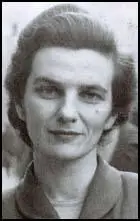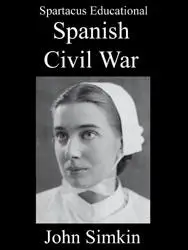Margot Heinemann

Margot Heinemann, the daughter of a banker, was born in London in 1913. Her parents were German Jews who were both supporters of the Labour Party.
Heinemann attended South Hampstead High School before moving to Roedean in Brighton. She was a very intelligent young woman and she won a scholarship to Newnham College, Cambridge University. She was an active member of the Cambridge Socialist Society where she met John Cornford and Kenneth Sinclair Loutit.
Heinemann later recalled that her political views were changed by attending a meeting addressed by Wilf Jobling: "I remember there was a demonstration to go out to greet the contingent of hunger marchers from the north-east coast who were passing through Cambridge. And we marched out to meet them at Girton and marched back with them... And there was a meeting in the town in the evening which was addressed by the leader of the contingent, Wilf Jobling... And I remember that as a landmark because it was the first time it had ever occurred to me that the working class could have a leading role, or a central role in politics."
In 1934 she joined the Communist Party of Great Britain. "We are all, as it were, the natural allies of the working class, it wasn't a question of crossing over from your middle-class background to find yourself a niche in the working-class movement, but of trying to unite all these kinds of people on the basis of a conscious desire to combat fascism and war." After leaving university she taught factory workers at Cadbury's Bournville in Birmingham and began living with John Cornford.
During the Spanish Civil War she played an active role in supporting the Republicans. This included selling pamphlets and organizing meetings. Cornford joined the International Brigades and served with the Worker's Party (POUM) army and fought at Aragon in August 1936. Soon afterwards he fell ill and spent some time in hospital. After three weeks in England he returned to the front-line.
Cornford took part in the battle for Madrid and on 7th November 1936, and received a severe head wound. Sam Russell was with him when it happened: "When the smoke cleared there was John Cornford with blood pouring down his face and head. We later discovered that it was one of our own anti-aircraft shells that had fallen short and had come through the side of a wall. They took John off and that afternoon he came back with his head bandaged, looking very heroic and romantic."
While recovering he wrote some of his most important poems including Heart of the Heartless World. John Cornford insisted on going back to the front-line and was killed near Lopera on about 27th December 1936, his twenty-first birthday. His body was never recovered.
In the 1940s Heinemann began living with J. D. Bernal and gave birth to a daughter, Jane Bernal. While working for the Labour Research Department she published several pamphlets including Britain's Coal; A Study of the Mining Crisis (1944), The Wages Front (1947) and The Tories and How to Beat Them (1951).
After the war she taught English Literature at Camden High School for Girls, Goldsmith College and New Hall College. The author Deborah Moggach has stated: "My most inspiring teacher was my English teacher at Camden school for girls. She was called Margot Heinemann and wasn't like a teacher at all, she was a hugely intelligent woman with large dark eyes... I adored her, we all did, because she treated us as grownups... She introduced us to The Waste Land, to books outside the curriculum, and somehow to life itself, with all its tragedy as well as its possibilities."
Heinemann grew disillusioned with Communist Party of Great Britain after the Hungarian Uprising in 1956 but remained a member. She later recalled: "What was new about that period for many of us was that for the first time, one didn't in one sense, get over it at all: some kinds of easy confidence one will never have again, and I think rightly not."
Other books by Heinemann included Britain in the Nineteen Thirties (1973), Experiments in English Teaching (1976) and Puritanism and Theatre (1982).
Margot Heinemann died on 10th June 1992.
Primary Sources
(1) Deborah Moggach, The Guardian (19th January 2010)
My most inspiring teacher was my English teacher at Camden school for girls. She was called Margot Heinemann and wasn't like a teacher at all, she was a hugely intelligent woman with large dark eyes and a Past. This included being the lover of John Cornford, a beautiful young poet who died in the Spanish civil war, and what could be more potent than that? I adored her, we all did, because she treated us as grownups. Camden girls were famously grownup anyway, alarmingly so, but she seemed to take that for granted even more than the other staff. She introduced us to The Waste Land, to books outside the curriculum, and somehow to life itself, with all its tragedy as well as its possibilities.

